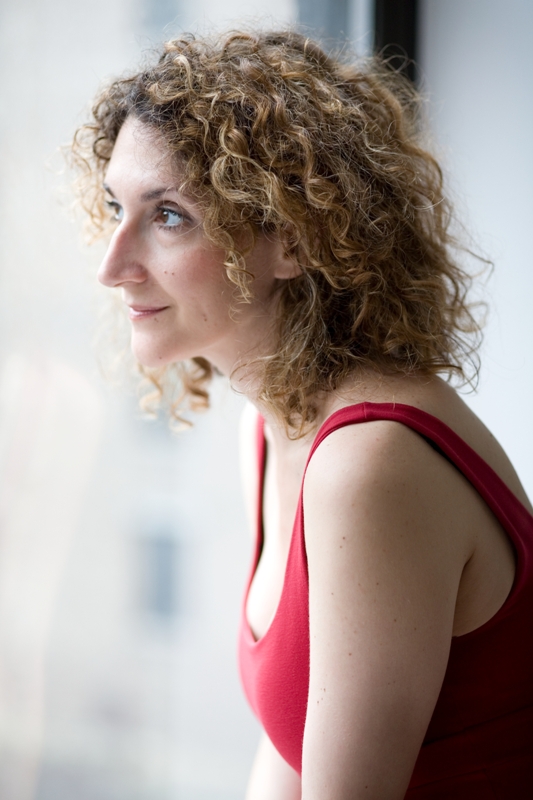Nonken, Sound Icon reveal Grisey work as a modern masterpiece
Pianist Marilyn Nonken joined Sound Icon in a program of new piano music, which culminated in Gérard Grisey’s chamber masterpiece, Vortex Temporum Thursday night at Tufts University’s Distler Performance Hall.
Grisey’s sextet (scored for piano, flute doubling on bass flute and piccolo, clarinet doubling on bass clarinet, violin, viola and cello) pulls the listener into his alien sound world through various means—the detuning of four notes on the piano, extended instrumental techniques, and an innovative approach to orchestration.
The piece unfolds from a rush of rapid figuration in the piano, flute and clarinet, from which sustained tones in the strings emerge as the piece develops. This initial gesture is revisited throughout the three movements of Vortex Temporum with shifts in timbre and duration in each iteration. Gabriela Diaz (violin), Mark Berger (viola) and Stephen Marotto (cello) matched flutist Jessi Rosinski and clarinetist Kevin Price’s rhythmic precision when it was their turn with the figuration, even when they employed mutes for a sudden and dramatic sonic reduction.
Likewise, Rosinski and Price matched the strings in the gentle dynamic shaping that allowed the sustained tones to seamlessly emerge from the texture. Nonken’s ensemble playing is as sensitive and emphatic as her solo performances, and she was always in perfect balance with the ensemble. The pianist’s energy was particularly critical in the prolonged piano outburst that ends the first movement. This aggressive, dissonant, cadenza-like section would be merely loud in lesser hands, but Nonken’s judicious pedaling and finely controlled phrasing illuminated its rhetorical interest. Even the detuned notes sounded completely at home.
The amount of sound the string section were able to generate in the brief interlude of col legno and bow-scraping techniques is a testament to their skill and dedication to contemporary practice.
The second movement that followed was one of slow, lush sounds against Nonken’s measured descending piano pulsations. Sound Icon’s expert blending of instruments into beautiful new timbres that subtly shifted color made this movement utterly gorgeous and emotionally satisfying.
Another interlude of subtle string noise marks the transition into the third movement, which returns us to the rapid figuration of the first movement, but transformed by use of string pizzicato and a variable sense of duration both within and between gestures. The sustained tones of the first movement are also exposed and allowed to stand alone. This disentangling of the original material lends a valedictory feeling to the movement that intensifies as both the rapid figuration and the piano attacks slow down and spread out. The final gesture, a repeated stopped note in the piano over waves of sound, is whittled down to just breaths of air and the whisper of col legno tratto in the strings for an ending that is both sublime and tragic.
Under the direction of conductor Jeffrey Means, Sound Icon’ ardent performance succeeded in focusing the audience’s concentration from beginning to end. His precise direction, in which no motion was wasted, maintained momentum and elicited perfectly timed contrasts throughout.
The audience had the advantage of acclimating their ears to the four detuned piano notes through a set of six newly composed solo piano works in the first half of the program. While this collection was a mixed bag, it did put the spotlight on Nonken’s command of her instrument and her mastery as an interpreter of new music.
Richard Carrick’s Les ceils de Kigali was a perfect concert opener with its monumental open chords progressively infiltrated by Grisey’s microtonality.
Nina C. Young’s A bout de souffle was built on a minimalist figure. While Nonken’s sense of time was impeccable, the piece had little forward motion and left the quarter tones sounding like accidents rather than a conscious harmonic shift. Brian Erickson’s Epistrata was similarly bland despite its aggressive, frenzied, chromatic gestures.
The final three pieces delivered on the promise of Grisey’s new piano sound. Edmund Campion’s highly colored chords and wealth of ideas contextualized the detuned notes not only harmonically, but timbrally as well in his piece Before and After. Here Nonken displayed her ease with working inside the piano.
The pointillistic gestures in Boston composer Victoria Cheah’s n. 961, 963 contained surprisingly lovely melodic turns and linear connections that kept the listener engaged despite some too obvious gestural similarities. The final work, Christopher Trapani’s Lost Time Triptych, was reminiscent of Campion’s piece in its wealth of ideas and strategic use of the detuned notes, but it had a decisively bluesy sensibility. Trampani’s final two notes seemed to beg for a third to resolve the piece’s tension. Listeners were left to imagine this “missing” note.
Posted in Performances




